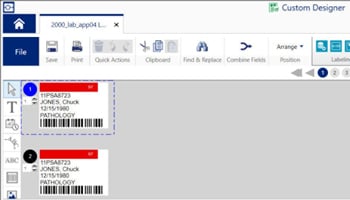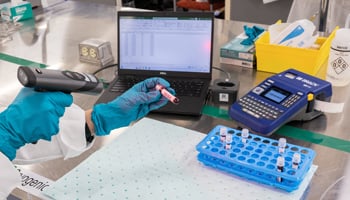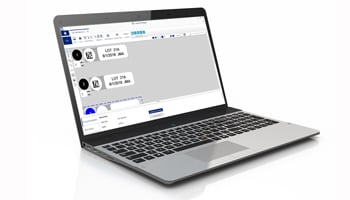Five Essential Features To Utilize in a Laboratory Identification Software Suite

Brady Workstation Laboratory Identification Software Suite (LISS) is a comprehensive lab software solution designed to enhance efficiency and accuracy. With the option to create customized labels for specific needs, it helps labs stand up to common labeling challenges such as identification errors, mislabeling or inconsistent practices
LISS provides a range of features so labs can streamline labeling processes, improve specimen traceability and ensure compliance with regulatory standards. Here are five essential features to utilize that can help get your lab running more efficiently.
-
Custom Designer
Create tailored labels for efficient identification of specimens and samples, ensuring that patient data and other relevant details are clearly and consistently presented.
- Customizable label templates will save time while ensuring that patient data, specimen type, collection date and other relevant details are accurate. A template also helps minimize errors caused by mislabeling or illegible labels, which can have serious implications for patient safety, research outcomes and regulatory compliance.
- Add barcodes, QR codes and other symbols to enhance organization and traceability within the lab. A sufficient track and trace system allows for quick and easy retrieval of samples and specimens.
- Flexible design options means each lab can customize labels to meet specific needs. This flexibility also allows different labs to meet specific standards or protocols, ensuring compliance and safety for all lab personnel.
-
Sequence
Automated label sequencing provides significant benefits in improving efficiency and accuracy. A good sequence feature offers various capabilities that enhance the labeling process.
- Numeric and alphanumeric sequences provide flexibility in labeling different types of samples and vials.
- Customizable sequence increments allow labs to tailor the sequencing to their specific needs. For example, they can set increments of 10, 100, or any other value that aligns with their labeling requirements.
- Ability to handle complex sequencing rules such as resetting the sequence number after a certain point or skipping specific values. This capability enables labs to accommodate unique labeling scenarios and ensure that each sample or specimen has a unique identifier.

-
Excel Import
LISS makes it easy to integrate lab data with its Excel Import functionality. Easily import Excel data right onto your labels, streamlining label creation and eliminating the need for manual data entry.
- Direct import of data from Excel spreadsheets into LISS eliminates the need for manual data entry and reduces the risk of errors. With this feature, data can be imported, regardless of its size or format.
- Mapping of Excel fields to label elements allows users to specify which data from the spreadsheet should be printed on each label. LISS supports a variety of label elements including text, barcodes and QR codes.
-
Advanced Import
In addition to importing data from Excel spreadsheets, labs often need to import data from various other sources, such as laboratory information systems (LIS), databases and text files. Advanced import features allow labs to import data from a wider range of sources.
- Integration with LIS allows labs to automatically import patient and specimen data. This lab automation software saves time, eliminates the need for manual data entry and reduces the risk of errors.
- Import from databases such as Oracle and SQL Server so labs can import data from their existing databases without having to export it to Excel first.
- Import from text files such as CSV and TSV files. This allows labs to import data from a variety of sources, including instruments and other software applications.

-
Template Editor
Create templates with locked or editable elements for consistent label creation. This ensures accurate and efficient identification without all the errors.
- Reusable templates allow users to create templates for different types of laboratory labels — slide labels, tissue cassette labels and tube labels. These templates can be reused multiple times, saving a lot of time and effort.
- Locking of specific elements for standardization means personnel can create consistency for certain elements of a label, such as the patient's name or specimen type. The Template Editor allows users to lock these elements so that they can’t be edited, preventing errors and maintaining uniformity.
- Ability to create editable sections means that variable data, such as the date or the technician's initials, can be changed for each sample. The Template Editor allows users to create editable sections for these variable data, ensuring that the labels are accurate and up-to-date.
